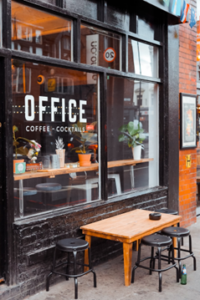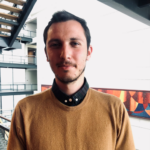
Source: Unsplash
However, there are two limitations to this approach. The first is to assume that all entrepreneurs could benefit equally from these resources by attending just one of these places. The second is to overlook the fact that entrepreneurs are embedded in an ecology of places that is itself embedded in wider local and urban dynamics. In other words, the entrepreneur may use a resource offered by one place, but he or she also frequents other places, and sometimes the most unexpected ones. These other places can produce and offer other resources that may be complementary. And what if the founding myth of the heroic entrepreneur in his garage was indeed a myth?
Innovate through a collection of places
To answer these questions, we start from the premise that the richness of regional experience can come from the places one visits in everyday life. Specifically, for entrepreneurs, this refers to the places they visit in their daily activities in the city where they are located. These daily mobilities then form a network of visited places, which we call preferential circulation. By visiting these places, entrepreneurs can mobilize and combine social, cognitive, material, or financial resources (Capron & Suire, 2024, 2025).

As the entrepreneurial journey is not linear, different places will be attended at different stages of the journey. For example, an entrepreneur may need to pitch his or her idea to get funding from VCs, but at a certain point, he or she may need to go to a FabLab to prototype the product or to a café to meet peers who would confirm that his or her intuition is interesting.
Toward micro-geography of innovation
Preferential circulation, the individual and collective patterns of place attendance, can be identified by tracking the places that entrepreneurs visit in their daily activities. It can be analyzed in terms of composition, frequency of attendance, or spatial distribution in the city region. As such, this new perspective has several implications for research and policy.
Regional studies research provides a bridging concept to better understand how cities and regions support entrepreneurship. As each place has its own characteristics, they do not offer the same conditions for mobilizing resources. While some places may offer one or more resources, access may be limited, or some resources may only be available temporarily. In addition, the resources may be rather generic, attracting heterogeneous actors, or, on the contrary, they may be rather specific, and the place is visited only by certain entrepreneurs. On the basis of the frequency of the presence of entrepreneurs, the analysis can position a place at the core or periphery of the network or characterize it as a boundary place if it favours the intermingling of different communities.
In addition, this new perspective can be used to reveal the presence of communities in a region based on the similarity of patterns (Figure 1). The more similar the places visited by one person to another, the more we can assume that they are trying to mobilize the same resources. In this way, a community’s level of maturity can be assessed and targeted by specific policies.

(Source: Capron & Suire, 2025)
Our knowledge of how entrepreneurial ecosystems form and evolve is still limited. Rethinking how they develop is an important and topical issue in the context of competition between regions and the need to develop new solutions for societal transitions. In terms of policy, local public actors should recognize that one-size-fits-all strategies based on places aimed at attracting heterogeneous profiles are not necessarily the best. It could be more about being more sensitive to the actual behaviors and needs of entrepreneurs in order to fine-tune the ecology of places in the region. However, which places to preserve, which to promote, and where different communities intersect are the questions that a place-sensitive policy could develop.
Having said that, we also believe that a fruitful line of research is to investigate how the organization of the city itself can influence entrepreneurial capacity. Indeed, preferential circulation, by revealing a network of useful places, also raises some questions of accessibility and mobility. The way a city is organized and planned can then be a determinant of entrepreneurial capabilities.
Authors

Etienne Capron is a post-doctoral fellow at Mosaic-HEC Montréal. His work connects organization theory with microgeography to study innovation processes, specifically in creative industries. His work has been published in Organization Studies and the Journal of Economic Geography journals.

Raphaël Suire, PhD is a Full professor in management of innovation at Nantes University / IAE in France and an associate researcher at HEC Montréal / MOSAIC in Canada. His work focuses mainly on socio-spatial conditions for the emergence of innovations. His work has been published in major journals such as the Journal of Economic Geography, Industrial and Corporate Change, Regional Studies, Creativity and Innovation Management, Annals of Regional Science, Entrepreneurship and Regional Development.